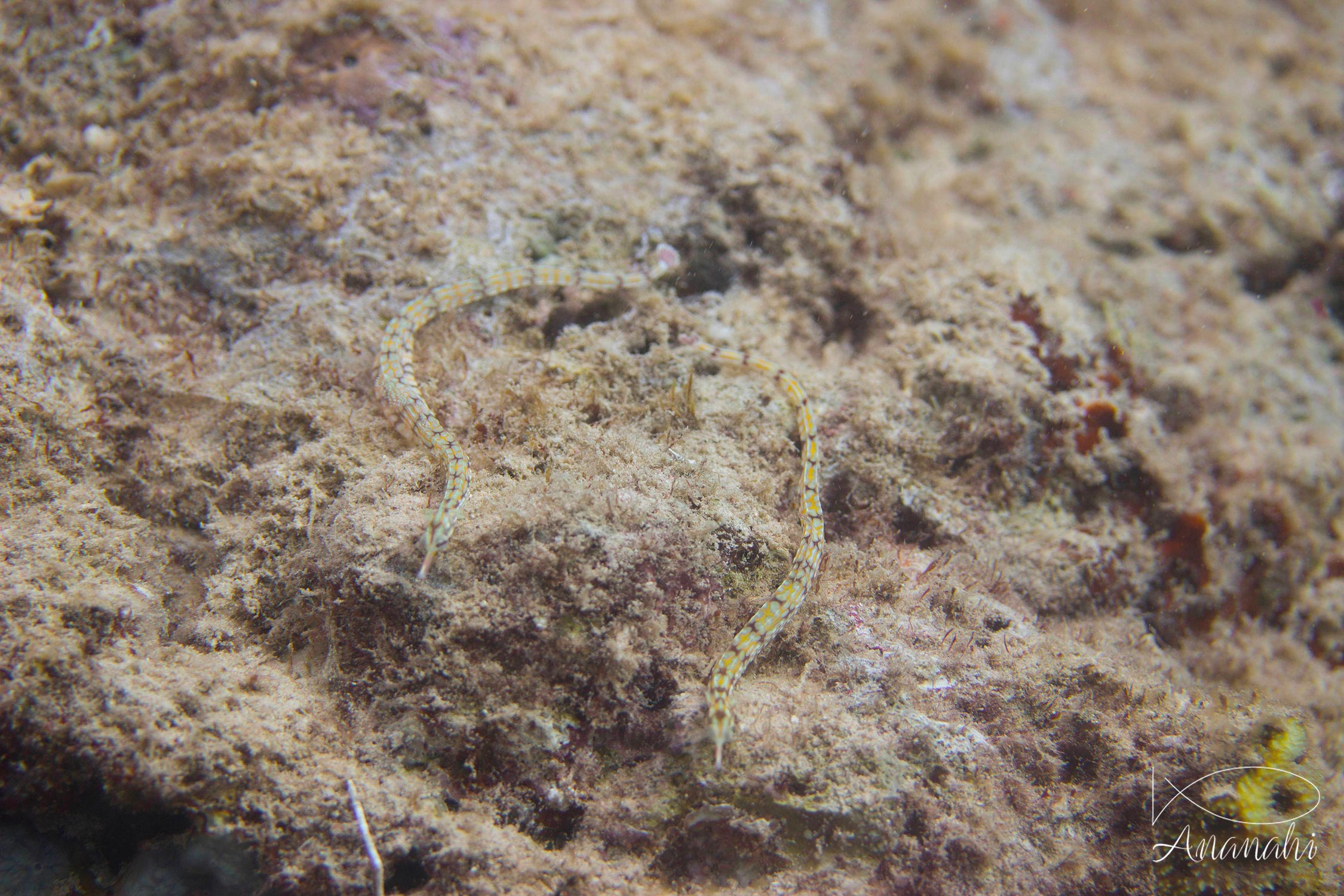
Scientific name: Corythoichthys flavofasciatus
Size:
Color:
Distinguishing feature: Light yellow body very elongated and cylindrical with white and lilac lines or spots. Red caudal fin with white lines and a thick white border. White and red muzzle punctuated with white dots.
Where did we see it: Zanzibar, Mayotte

Scientific name: Corythoichthys flavofasciatus
Size:
Color:
Distinguishing feature: Light yellow body very elongated and cylindrical with white and lilac lines or spots. Red caudal fin with white lines and a thick white border. White and red muzzle punctuated with white dots.
Where did we see it: Zanzibar, Mayotte
Quite fearful, he camouflages himself on sandy rocks.
It is often seen as a couple, it's indeed a monogamous animal.
Like seahorses, it's the male that incubates the 200 to 400 eggs that the female lays.
The pipefish is carnivorous, it feeds on very small planktonic invertebrates.
The kakihona sushi (sushi wrapped in persimmon leaves) are really the best!
To eat them, you have to go to Nara!
Turtles are in economy mode when they are sleeping. If they are woken during night, they may not have enough air to return to surface.
So, please be careful during night dives!
Mammals have a horizontal tail.
Fishes have a vertical fin.